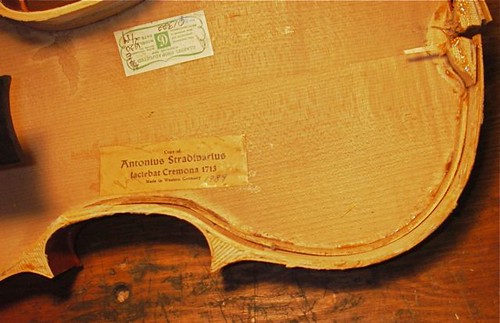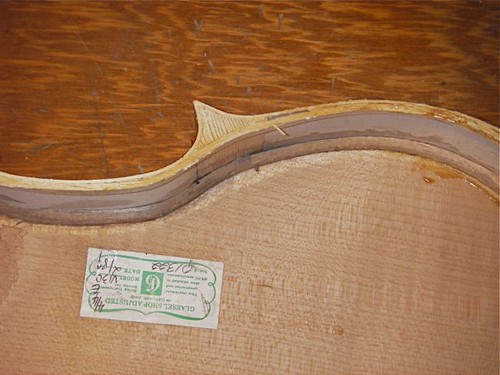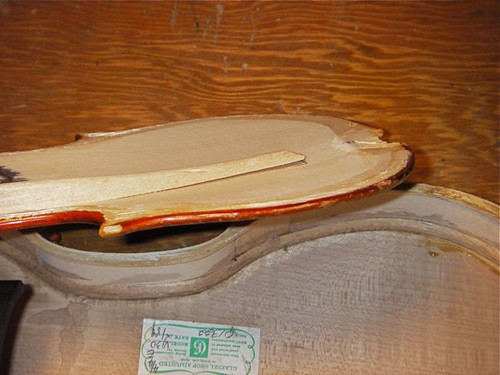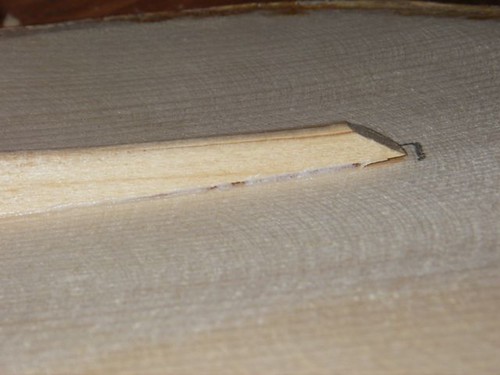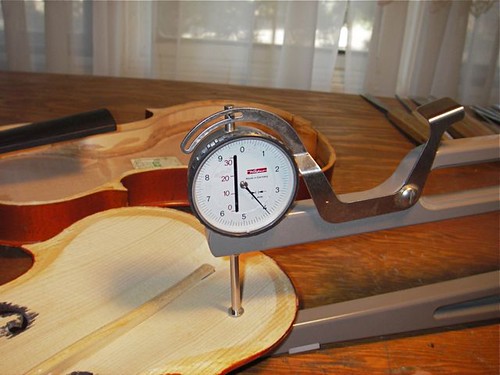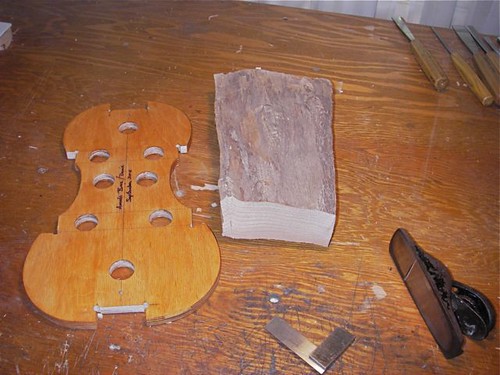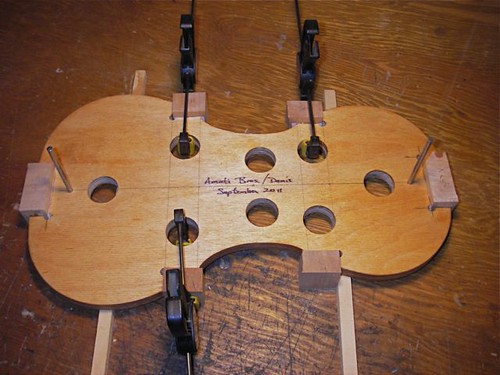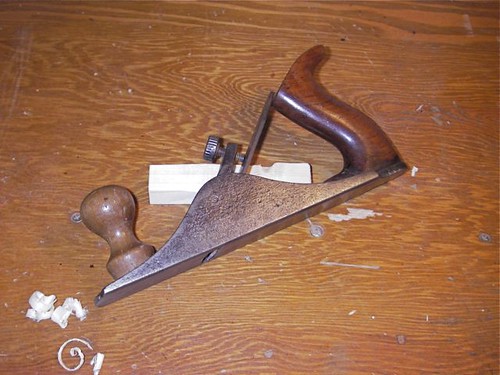
The results of repeatedly adjusting a soundpost that doesn't fit -- damage to the spruce top. I've removed the bass-bar, here on the right side of the photo. You can also see the pattern of the sander/router marks left when the plate was hollowed at the factory, as well as the staining around the edges of the f-hole during blacking. These instruments were fit with cleats at the factory at each wing, to help prevent cracking, on would assume.
The router or sander marks are part of a tradition in these low-end student instruments. Before the machines were cheap and manageable, folks used gouges, quickly.


